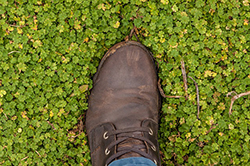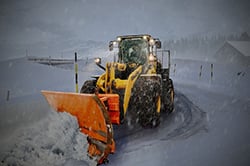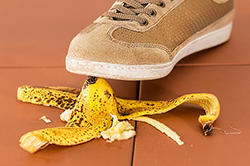 Workers’ Compensation covers medical and other expenses if you suffer an injury or illness from work-related activities. You may wonder, though, if you can file a claim if you’re injured during your commute, especially if you carpool with co-workers or run errands for your boss on the way to work. Here are some guidelines to help you answer this question.
Workers’ Compensation covers medical and other expenses if you suffer an injury or illness from work-related activities. You may wonder, though, if you can file a claim if you’re injured during your commute, especially if you carpool with co-workers or run errands for your boss on the way to work. Here are some guidelines to help you answer this question.
Understand the Coming and Going Rule
The Workers’ Compensation laws vary by state, but in general, the “coming and going rule” applies to your commute. This rule states that employees who work in a permanent location, such as an office building or factory, cannot file a Workers’ Compensation claim for injuries they suffer during their commute to their work location because they do not perform work-related tasks during the commute. However, you may experience several exceptions to the coming and going rule.
You Don’t Have Permanent Workplace
Certain employees travel to different job sites for work rather than reporting to one specific location. In this case, your travel falls under your employment duties. If you would suffer an injury while commuting to a job site, you could file a Workers’ Compensation claim.
You Drive a Company Vehicle
Your employer may provide you with a vehicle to drive to and from work. Even if you work in a permanent job location, your commute could be considered part of your job because you drive a company car. In this case, you may be eligible for Workers’ Compensation if you suffer an injury during your commute.
Your Employer Covers Travel Expenses
Sometimes, an employer will reimburse you for travel expenses, including costs associated with your commute. You may be eligible to file a Workers’ Compensation claim in this case because you receive travel expense reimbursement.
Your Employer Mandates Carpooling
Your employer may mandate carpooling for your commute because it builds team rapport, conserves parking spaces or is environmentally friendly. Because of this incentive, your commute may be considered part of your employment relationship, allowing you to file a Workers’ Compensation claim for injuries that occur as you carpool.
You do Errands for Your Employer
If your employer asks you to stop for coffee on the way to work or mail packages after work, you are performing work-related tasks even though you’re not on your employer’s premises. In this case, your commute may be covered by Workers’ Compensation.
An injury that occurs during your commute to or from work probably won’t be covered by Workers’ Compensation. You may talk to your human resources manager, though, for details on your specific accident because certain exceptions could allow you to file a claim and receive compensation.

 Whether you stand all day, operate heavy machinery or handle chemicals, you need to protect your feet as you work. Several foot safety tips reduce injuries and help you maintain a safe work environment.
Whether you stand all day, operate heavy machinery or handle chemicals, you need to protect your feet as you work. Several foot safety tips reduce injuries and help you maintain a safe work environment. Across the country, temperatures plummet during cold winter months. Many employees must work outdoors and face injury or even death because of the weather conditions. Protect your outdoor workers with several safety precautions.
Across the country, temperatures plummet during cold winter months. Many employees must work outdoors and face injury or even death because of the weather conditions. Protect your outdoor workers with several safety precautions. The majority of accidents in your workplace may stem from slips, trips and falls. In fact, slips, trips and falls cause one in four reported workplace injuries, 15 percent of workplace accidental deaths and 65 percent of lost work days.
The majority of accidents in your workplace may stem from slips, trips and falls. In fact, slips, trips and falls cause one in four reported workplace injuries, 15 percent of workplace accidental deaths and 65 percent of lost work days.




